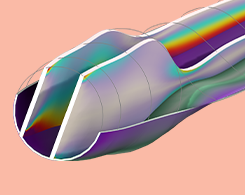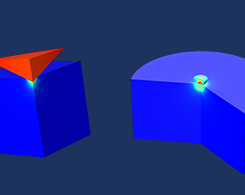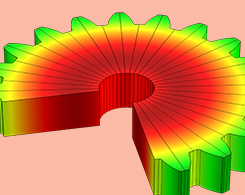Material Models Blog Posts

Introduction to the Composite Materials Module
Explore the Composite Materials Module, an add-on to COMSOL Multiphysics® that includes specialized functionality for modeling layered composite structures.

The History and Science Behind Vinyl Records
As vinyl records explode in popularity, we take a look back at the history of records, as well as the interesting science behind how they are produced — and how they play music.

Modeling Thermomechanical Fatigue in COMSOL Multiphysics®
You can analyze thermomechanical fatigue in COMSOL Multiphysics® using experimental data from fatigue testing and material parameters from literature. A guest blogger demonstrates…

The North Pole Models Product Distribution Challenges for the Holidays
Today, a guest blogger from the North Pole discusses using simulation to find out if his boss will be able to fit down all of the chimneys this holiday season.

Exploring the Ambiguity of Hardness Numbers with COMSOL®
To help customers easily obtain stress-strain curves from indentation test data, this guest blogger turned to simulation applications and COMSOL Compiler™ — and created a brand new product.

Implementing a Damage Evolution Law for a Hyperelastic Material
By implementing a physically motivated damage evolution law for a hyperelastic material, you can incorporate material softening, creep, and stabilization of hysteresis curves during cycling.

Estimating Hyperelastic Material Parameters via a Lap Joint Shear Test
For rubber, polymers, and biological tissue, the relationship between stress and strain is nonlinear, even at small loads. The lap joint shear test can be used to determine material properties.

Introducing the Metal Processing Module
The Metal Processing Module includes 2 interfaces for analyzing diffusive and displacive metallurgical phase transformations: Metal Phase Transformation and Austenite Decomposition.
